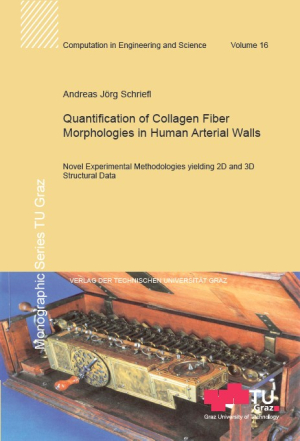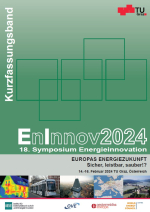Changes in the mechanical properties of a healthy arterial wall play an important role in pathological and degenerative processes including increased wall stiffness, atherosclerosis and enlargement of intracranial aneurysms. A meaningful quantification of morphological collagen data in human arteries is fundamental to a better understanding of the underlying mechanical principles governing the biomechanical response of the vessel walls. Towards obtaining such data, collagen fiber angles and dispersions were quantified along the human descending aorta and common iliac artery, using an established experimental approach based on measuring individual fiber angles from histological sections.
Having overcome several limitations inherent to the traditional approach, a unique automated method is presented for the extraction and quantification of collagen fiber distributions from 2D images and for a statistical analysis among varying length-scales. In aiming to move beyond a two-dimensional quantification, a novel approach was developed ultimately which combines a new sample preparation technique for intact arterial segments with optical tissue clearing and subsequent imaging using second-harmonic generation microscopy. This approach yielded 3D image stacks throughout the thickness of the arterial wall. The collagen structures were extracted and quantified, resulting in a representative 3D distribution of collagen fiber orientations from which structural parameters were determined in order to be utilized directly in numerical codes using fiber-reinforced constitutive laws.
Novel Experimental Methodologies yielding 2D and 3D Structural Data
Issue: Open Access E-Book
ISBN: 978-3-85125-239-2
Language: Englisch
Release date: February 2013
Series: Monographic Series TU Graz / Computation in Engineering and Science, Issue 16
Changes in the mechanical properties of a healthy arterial wall play an important role in pathological and degenerative processes including increased wall stiffness, atherosclerosis and enlargement of intracranial aneurysms. A meaningful quantification of morphological collagen data in human arteries is fundamental to a better understanding of the underlying mechanical principles governing the biomechanical response of the vessel walls. Towards obtaining such data, collagen fiber angles and dispersions were quantified along the human descending aorta and common iliac artery, using an established experimental approach based on measuring individual fiber angles from histological sections.
Having overcome several limitations inherent to the traditional approach, a unique automated method is presented for the extraction and quantification of collagen fiber distributions from 2D images and for a statistical analysis among varying length-scales. In aiming to move beyond a two-dimensional quantification, a novel approach was developed ultimately which combines a new sample preparation technique for intact arterial segments with optical tissue clearing and subsequent imaging using second-harmonic generation microscopy. This approach yielded 3D image stacks throughout the thickness of the arterial wall. The collagen structures were extracted and quantified, resulting in a representative 3D distribution of collagen fiber orientations from which structural parameters were determined in order to be utilized directly in numerical codes using fiber-reinforced constitutive laws.






